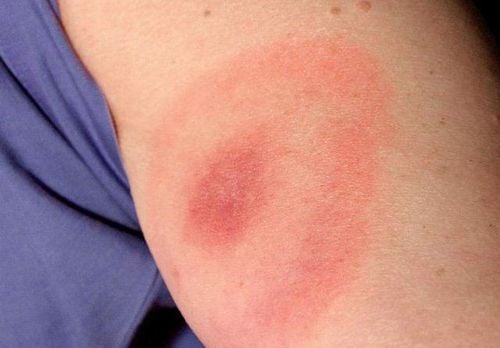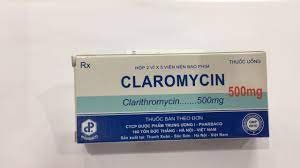This is an automatically translated article.
The article is professionally consulted by Master, Doctor Nguyen Tung Hoanh - Interventional Cardiologist - Department of Resuscitation - Emergency - Vinmec Nha Trang International General Hospital.Myocarditis is a dangerous disease that can affect anyone, but is more common in young people. The disease can lead to death or severe sequelae if not treated promptly. There are many types of myocarditis depending on the causative agent, such as viral myocarditis, diphtheria myocarditis,...
1. Common types of myocarditis
1.1 Rheumatic myocarditis Rheumatic myocarditis is common in young people (5-20 years old) after infection with group A beta-hemolytic streptococcus in the throat, teeth,...
Signs of myocarditis due to rheumatic fever Low:
Occurrence of symptoms of group A beta-hemolytic streptococcal infection such as pharyngitis (sore throat, red throat, swollen neck nodes, fever...), skin inflammation... After the appearance of symptoms Over a period of time, manifestations of myocarditis appear such as: tachycardia, weak pulse, low blood pressure, palpitations, chest pain, shortness of breath with exertion, sometimes even when breathing. rest... Joint pain or swelling, usually with large joints such as the knee and of a movable nature. Joint pain usually improves after a few days to a week or with aspirin and other pain relievers and leaves no sequelae in the joints. There may be signs of dancing, jerking, dancing movements, swinging arms and legs unconsciously... Appears ring-shaped erythema on the skin, especially around the joints called erythema ring, or A rash that develops under the skin is called a nodular rash. 1.2 Diphtheria myocarditis Diphtheria is an acute bacterial infection with pseudomembranous tissue in the amygdala, pharynx, larynx, and nose. The disease can appear in the skin, other mucous membranes such as the conjunctiva of the eyes or the genitals.
This is a disease that is both infectious and toxic and the severe lesions of the disease are mainly caused by the exotoxins of the diphtheria bacteria.
Myocarditis occurs in about 20% of patients with diphtheria. With diphtheria myocarditis, the mortality rate is very high (80-90%).
Signs of identification:
Signs of respiratory tract infection with diphtheria bacteria: Fever, red throat, painful swallowing, blue skin, fatigue, swollen lymph nodes under the jaw causing swelling in the neck area; pharynx, larynx with pseudomembranous, diphtheria pseudomembranous is often white or gray attached to the surrounding inflammatory tissue, if removed, it will bleed. Bacterial toxins cause myocarditis manifests: Tachycardia, weak pulse, low blood pressure, palpitations, chest pain, shortness of breath with exertion, sometimes even at rest...

Hình ảnh viêm cơ tim
1.3 Viral myocarditis is the most common cause of myocarditis, in which the two main agents are adenovirus and coxsackievirus B.
Adenovirus: Adenovirus is one of the most common viruses causing acute myocarditis in both children and adults. The virus is also a common cause of respiratory infections, and sometimes cystitis and gastrointestinal infections. Adenovirus is mainly spread through the respiratory tract when a healthy person comes into contact with secretions from the nose and throat of a virus carrier.
Coxsackievirus B: Coxsackievirus B can cause flu or attack the heart. The disease is not usually fatal but can result in permanent damage to the heart muscle, especially if the disease has recurred a second time. This virus is transmitted through feces, so one of the most effective ways to prevent infection is to always wash your hands and improve your daily hygiene habits.
Signs of viral myocarditis:
Signs of viral infection: Mild fever, sore throat or diarrhea, headache, body aches, joint pain. Signs of myocarditis: Tachycardia, weak pulse, low blood pressure, palpitations, chest pain, shortness of breath on exertion, sometimes shortness of breath even at rest... 1.4 Lyme disease myocarditis Lyme disease is a zoonotic disease caused by the spirochete Borrelia burgdorferi (B.b). The disease affects mainly the skin, nervous system, heart and joints.
The disease usually occurs in the early summer months with the following features: characteristic skin erythema (erythema migrans), after a few weeks to a few months, neurological, joint, or related symptoms appear. heart disease and often have few long-term sequelae.
Approximately 10% of Lyme disease patients have evidence of transient cardiac manifestations, the most common presentation being atrioventricular block of varying degrees. Syncope due to complete heart block often occurs with cardiac manifestations because there is often suppression of the associated ventricular escape rhythms.
In addition, myocarditis can also be caused by other causes such as radiation, pregnancy, parasites, fungi...
2. How is myocarditis diagnosed?

Siêu âm tim giúp đánh giá hình ảnh động của tim, xem tim có dãn lớn hay không
In addition to relying on directional clinical symptoms, it is necessary to combine with subclinical tests to help diagnose myocarditis and diagnose the cause of the disease.
Laboratory tests include:
Echocardiography: Evaluation of the dynamic images of the heart, whether the heart is dilated or not. Assess contractile function, heart valve problems, and fluid around the heart.
Electrocardiogram: Evaluate the heart electrically and detect heart rhythm abnormalities, assess damage to the heart muscle.
Cardiopulmonary X-ray: Evaluation of cardiac shadow, size, shape and structure. Is there pleural effusion, pericardial effusion or not.
Blood tests: Bilan inflammation: Erythrocyte sedimentation rate, protein C. Blood count. Cardiac enzymes such as, troponin T, CK-MB, AST, ALT... can be elevated in acute and chronic myocarditis. However, negative cardiac enzymes does not rule out myocarditis. Polymerase Chain Reaction (PCR) has the advantage of being able to detect viral genomes in cardiac muscle cells, but not in peripheral blood. This technique identifies the type of virus that causes the disease. In advanced countries, doctors may prescribe cardiac catheterization with a catheter through a vein in the neck or thigh, and threaded to the heart for myocardial biopsy. Other tests: Depending on the clinical situation, the doctor may order some tests to find other causes.
3. Prevention of myocarditis
The prevention of myocarditis is difficult, because there are many causes of myocarditis. There are a number of measures to help prevent infection such as:
Avoid contact with people who are infected or suspected to have the virus. Maintain hygiene, especially when living or working in a polluted environment. Fully vaccinated. Myocarditis is a complex disease with many causes. Patients should not be subjective to common infections including influenza. In addition, proactively taking some preventive measures can also help reduce the risk of myocarditis.
Ths.BS. Nguyen Tung Hoanh has experience and strength in Cardiovascular Resuscitation - Emergency: Hypertension, Peripheral Vascular Diseases, acute and chronic coronary artery diseases, ..in addition, the doctor also treats other diseases. Comorbidities such as: Diabetes, Hyperthyroidism, Hypothyroidism, Kidney diseases, respiratory diseases, etc. Currently, Dr. Hoanh is an interventional cardiologist at the Department of Resuscitation - Emergency - Vinmec Nha Trang International General Hospital.
Please dial HOTLINE for more information or register for an appointment HERE. Download MyVinmec app to make appointments faster and to manage your bookings easily.
Reference source: Department of Preventive Medicine - Ministry of Health












